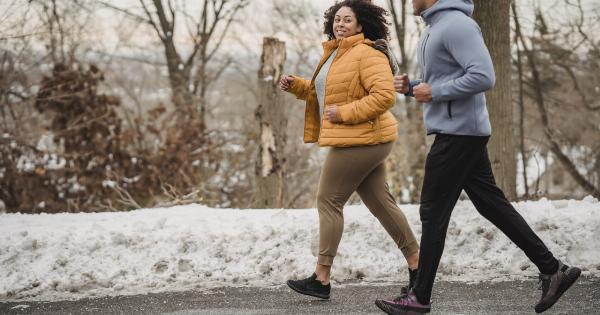For some people, winter weather can be unbearable due to the extreme cold temperatures. If you happen to live in an area with long, cold winters, it is important to consider ways to improve your cold tolerance.
There are many factors that can influence your body’s ability to tolerate cold temperatures. In this article, we will explore some of these factors and offer tips on how to improve your cold tolerance.
Factors that Influence Cold Tolerance
1. Genetics
Genetics play a significant role in determining an individual’s cold tolerance. Some people are naturally able to handle colder temperatures better than others.
Research has shown that the presence of brown adipose tissue, also known as brown fat, can help improve cold tolerance. This type of fat generates heat and helps to keep the body warm. However, the amount of brown fat a person has is largely determined by genetics.
2. Age
As we age, our body’s ability to regulate temperature decreases. This can make it more difficult for older adults to tolerate cold temperatures.
Additionally, older adults may have a harder time identifying when they are getting too cold, which can increase their risk of developing hypothermia.
3. Gender
Research has shown that women tend to have lower cold tolerance than men due to differences in body composition.
Women have a higher percentage of body fat than men, which provides less insulation and can make it harder to stay warm in cold temperatures.
4. Health Conditions
Certain health conditions can make it harder for individuals to tolerate cold temperatures. For example, individuals with diabetes or hypothyroidism may have decreased circulation, which can make it harder to keep the body warm.
Similarly, individuals with heart disease may have a harder time regulating body temperature due to decreased blood flow.
5. Clothing
The type of clothing you wear can have a significant impact on your ability to tolerate cold temperatures. When dressing for cold weather, it is important to wear layers.
This allows you to adjust your clothing as needed to maintain a comfortable temperature. Additionally, it is important to choose clothing made from materials that are designed to provide insulation, such as wool or down.
6. Physical Fitness
Individuals who are physically fit tend to have better blood flow, which can help to keep the body warm in cold temperatures. Additionally, regular exercise can help to increase the amount of brown fat in the body, which can improve cold tolerance.
7. Hydration
Staying hydrated is important for overall health, but it can also help to improve cold tolerance. When your body is dehydrated, it can create a barrier to heat loss, making it harder for the body to release excess heat.
Additionally, staying hydrated can help to improve circulation, which can help to regulate body temperature.
8. Nutrition
Eating a healthy diet can also help to improve cold tolerance. Certain foods, such as those high in protein, can help to increase the body’s metabolic rate, which can generate heat and keep the body warm.
Additionally, foods high in healthy fats can help to provide insulation and keep the body warm.
9. Acclimation
One way to improve cold tolerance is through acclimation. Spending time in cold environments can help the body to adapt and tolerate cold temperatures better. This can be done by gradually exposing the body to colder temperatures over time.
For example, taking cold showers or spending time outdoors in cold weather can help improve cold tolerance.
10. Mindset
Finally, your mindset can play a role in your ability to tolerate cold temperatures. Research has shown that individuals who believe they can handle the cold tend to have better cold tolerance than those who believe they cannot.
Remaining positive and focusing on the benefits of cold exposure, such as improved immune function and increased mental clarity, can help to improve your cold tolerance.
Conclusion
Improving your cold tolerance can be beneficial for your overall health and well-being, especially if you live in an area with cold winters.
By considering the factors outlined in this article, you can take steps to improve your cold tolerance and stay comfortable in cold temperatures.































